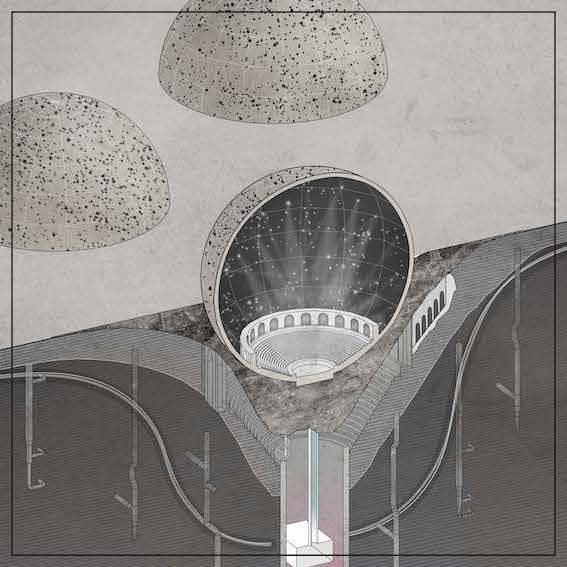Trash Peaks
Seoul Biennale, 2017
Project Team:
El Hadi Jazairy + Rania Ghosn
Reid Fellenbaum, Victor Lee, Monica Britt Hutton, Beth Savrann
Trash Peaks proposes six projects that place the matters of waste –its flows, ecologies, and logistics– at the center of urban concerns. The six projects are: 1) Plastisphere, recycles obsolete plastic waste into a plastidome that hovers on top of the Changsin hilltop toy market; 2) E-Fungi Volcano, deploys fungi species over five levels of extraction to mine different rare earth metals from the e-waste stream in the Yongsan Electronics Market; 3) Janus Incinerator, embedded into the Bukhansan Mountain, burns waste from decommissioned landfills to power a quarter of the metropolis’ energy demands; 4) Towering Construction, wraps Seoul’s waste of concrete, steel, and wood around Mount Namsan; 5) Leachate Cenotaph, filters organic contaminant and ammonia concentrations in the reclaimed Sudokwon Landfill, 6) Methane Aviary, retrofits the vertical gas pipes of the excavated Nanjido island into an aviary forest.
the installation presents the six projects through the artifacts of carpet, folding screen, and ceramics tableware. The carpet is an infographics diagram about waste management in Seoul and the matters of concern specific to each project and site. The folding screen appropriates the object of the irworobongdo, the symbolic Korean folding screen that portrays a place of peaks in a royal court, to recompose a series of six highly stylized landforms. Each of the landforms is itself transforms a monument –such as Lequeu’s Temple de la Terre, BEL Architects’ watchtower, Price’s Aviary– to critique the relationship with the natural environment in an era of ecological anxiety. The ceramics tableware is a set of project miniatures that serve as the setting for a tea ceremony in which participants discuss the concerns of waste management.
